<< Previous | Displaying results 6201-6250 of 6720 for "" | Next >>
-
The 2nd Infantry Division during World War II
ArticleThe 2nd Infantry Division participated in major WWII campaigns and is recognized for liberating Leipzig-Schönefeld and Spergau/Zöschen in 1945.
-
The 9th Armored Division during World War II
ArticleThe 9th Armored Division participated in major WWII campaigns and is recognized for liberating Zwodau and Falkenau an der Eger, Flossenbürg subcamps, in 1945.
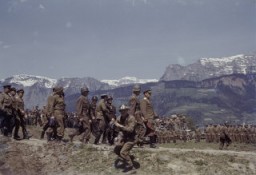
-
The 95th Infantry Division during World War II
ArticleThe 95th Infantry Division participated in major WWII campaigns and is recognized for liberating Werl, a prison and civilian labor camp, in 1945.
-
The 3rd Armored Division during World War II
ArticleThe 3rd Armored Division participated in major WWII campaigns and is recognized for liberating the Dora-Mittelbau concentration camp in 1945.

-
The 86th Infantry Division during World War II
ArticleThe 86th Infantry Division participated in major WWII campaigns and is recognized for liberating Attendorn, a civilian forced-labor camp, in 1945.
-
The Great Depression
ArticleLearn about causes, scope, and impacts of the Great Depression, including how it played a role in Adolf Hitler's emergence as a viable political leader in Germany.
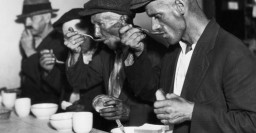
-
Lithuania
ArticleAs part of the Holocaust, the Germans murdered about 90% of Jews in Lithuania. Read more about the tragic experience of Lithuanian Jews during World War II.

-
The 4th Armored Division during World War II
ArticleThe 4th Armored Division participated in major WWII campaigns and is recognized for liberating the Ohrdruf subcamp of Buchenwald in 1945.
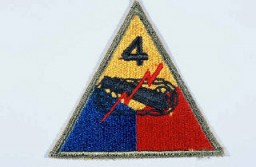
-
The 8th Armored Division during World War II
ArticleThe 8th Armored Division participated in major WWII campaigns and is recognized for liberating the Halberstadt-Zwieberge subcamp of Buchenwald in 1945.
-
Collections Highlight: Auschwitz Through the Lens of the SS
ArticleKarl Höcker created a personal album of photographs chronicling SS officers’ activities at Auschwitz. Learn about this chilling collection.
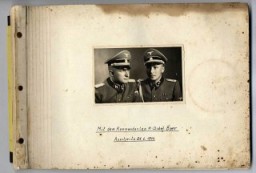
-
Auschwitz Through the Lens of the SS: The Album
ArticleLearn about photographs contained in Karl Höcker’s album depicting official visits, ceremonies, and the social activities of the Auschwitz camp staff.
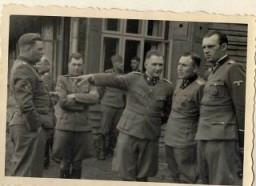
-
Auschwitz Through the Lens of the SS: Frankfurt Trial
ArticleKarl Höcker’s album shows him in close contact to the main perpetrators at Auschwitz-Birkenau. Learn about his 1963 trial and the significance of his album.
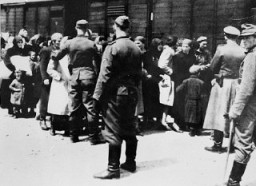
-
Auschwitz Through the Lens of the SS: A Tale of Two Albums
ArticleKarl Höcker’s album shows SS officers at events ranging from ceremonies to social gatherings, in stark contrast to other photographs from Auschwitz. Learn more.

-
Introduction to the Holocaust
ArticleLearn about the Holocaust, the systematic, state-sponsored persecution and murder of six million Jews by the Nazi regime and its collaborators.

-
Gay Men under the Nazi Regime
ArticleThe Nazi regime carried out a campaign against male homosexuality and persecuted gay men between 1933 and 1945.
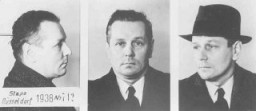
-
Protocols of the Elders of Zion
ArticleThe Protocols of the Elders of Zion is the most widely distributed antisemitic publication of modern times. Although repeatedly discredited, it continues to circulate.
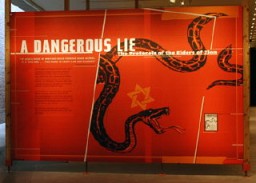
-
Exhibition about the Protocols of the Elders of Zion
PhotoAn exhibition at the United States Holocaust Memorial Museum demonstrated how the Nazis used the Protocols of the Elders of Zion to spread hatred of Jews. Washington, D.C., 2006-2018.
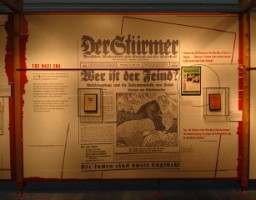
-
The Times, August 17, 1921
Media EssayIn 1921, a London Times article provided proof exposing the Protocols of the Elders of Zion as fraudulent. The most widely distributed antisemitic publication of modern times, the Protocols falsely purports to be the record of secret meetings of Jewish leaders who were plotting to take over the world. The text has been repeatedly discredited since, but continues to circulate today.
-
Assembly point in the Warsaw ghetto
PhotoAn assembly point (the Umschlagplatz) in the Warsaw ghetto for Jews rounded up for deportation. Warsaw, Poland, 1942–43.
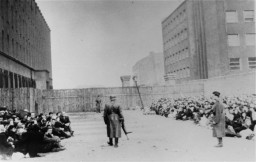
-
Young girls pose in a yard in the town of Ejszyszki (Eishyshok)
PhotoA group of young girls poses in a yard in the town of Ejszyszki (Eishyshok). The Jews of this shtetl were murdered by the Einsatzgruppen on September 21, 1941. Photo taken before September 1941.

-
Helena Husserlova with her daughter, Zdenka
PhotoIn this portrait, Helena Husserlova, wearing a Jewish badge, poses with her daughter Zdenka who is holding a teddy bear. The photograph was taken shortly before they were deported to Theresienstadt. Zdenka was born in Prague on February 6, 1939. On October 10, 1941, when Zdenka was just two and a half years old, her father was deported to the Lodz ghetto. He died there almost a year later, on September 23, 1942. Following his deportation, Helena and Zdenka returned to Helena's hometown to live with…
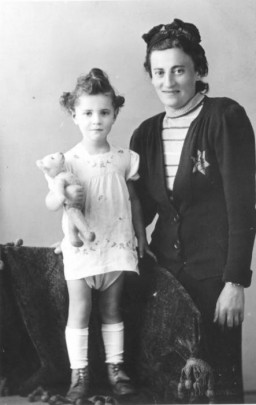
-
Child survivors of Auschwitz
PhotoThis photograph is a still from Soviet film footage of the liberation of Auschwitz. The film was made by the film unit of the First Ukrainian Front. Relief workers and Soviet soldiers lead child survivors of Auschwitz through a narrow passage between two barbed-wire fences. Standing next to the nurse and behind them (wearing white hats) are two sets of twin sisters. During the camp's years of operation, many children in Auschwitz were subjected to medical experiments by Nazi physician Josef Mengele.
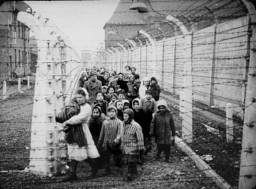
-
Members of the Danishevska family
PhotoPrewar family portrait of members of the Danishevska family in Vilna, Lithuania, 1926–27. None of those pictured here survived the Holocaust.
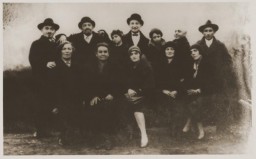
-
Klara Taussig and Ernst Brecher on an outing in the Austrian countryside
PhotoKlara Taussig and Ernst Brecher go on an outing in the Austrian countryside before their marriage. They later had a son, Heinz, who was born on August 29, 1932 in Graz, Austria. where his father was a merchant. After the Germans annexed Austria in 1938, Klara and Ernst sent Heinz to live with friends of an aunt in Zagreb. Heinz survived and eventually came to the United States on the Henry Gibbins, a military troop transport. Klara and Ernst died in the concentration camps. Photograph taken…
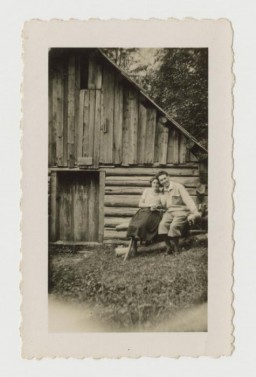
-
Frank Liebermann has a conversation with his teddy bear
PhotoHolocaust survivor Frank Liebermann has a conversation with his teddy bear. Germany, 1933–35. On Frank Liebermann’s first day of school in Gleiwitz, Germany, in 1935, he reported to one of the few small classrooms set aside for Jews. After school, he rushed home to avoid antisemitic attacks. In 1936, it got worse. Anti-Jewish laws now banned Frank from playgrounds and swimming pools. The family decided it was time to leave and applied for US visas. They were lucky. In October 1938, the…
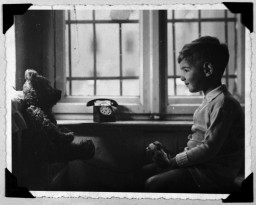
-
Villiam Krausz sits with a doll and a teddy bear shortly before the family went into hiding
PhotoBenjamin Kedar (born Villiam Krausz) sits with a doll and a teddy bear shortly before his family went into hiding. Villiam's parents married in Prague and settled in Nitra, Slovakia. They worked as physicians. They had a daughter, Helen, in 1934, and Villiam in 1938. In 1942 the family relocated to a nearby village until September 1944. At that point, they went into hiding with Slovak peasants to avoid deportation to Auschwitz. Villiam, his sister, and his parents survived the…
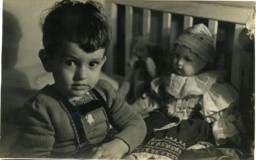
-
Photograph of Robert Coopman
PhotoRobert Coopman was born in the Netherlands in September 1940. This 1941 photograph shows Robert holding a telephone while sitting next to a teddy bear. He and his parents lived in Amsterdam where his father was a salesman and bookkeeper. In July 1942, fearing for their safety, Robert's parents placed him in hiding with the Viejou family in Naarden. He was less than two years old. He lived as a member of the household until August 1944, when a neighbor betrayed them. Robert was …
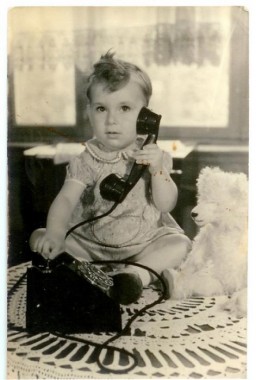
-
Trench warfare on the western front during World War I
PhotoTrench warfare is one of the iconic symbols of World War I. This photograph shows British troops carrying boards over a support line trench at night during fighting on the western front. Cambrai, France, January 12, 1917.
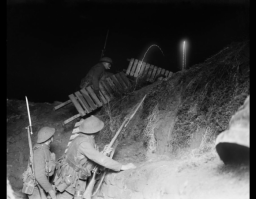
-
Herta Oberheuser
PhotoHerta Oberheuser was a physician at the Ravensbrück concentration camp. She performed medical experiments. She was found guilty of performing sulfanilamide experiments, bone, muscle, and nerve regeneration and bone transplantation experiments on humans, as well as of sterilizing prisoners. This portrait of Herta Oberheuser was taken when she was a defendant in the Medical Case Trial at Nuremberg.
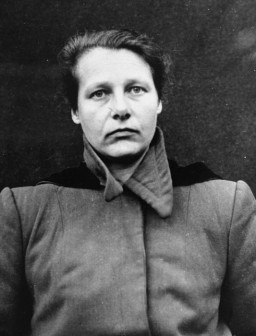
-
Honoring Oskar Schindler
PhotoOskar Schindler plants a tree on the Avenue of the Righteous Among the Nations at Yad Vashem. The Righteous Among the Nations are non-Jewish invididuals who have been honored by Yad Vashem, Israel's Holocaust memorial, for risking their lives to aid Jews during the Holocaust.

-
SS officer Theodor Eicke visits the Lichtenburg camp
PhotoScene during a visit by SS officer Theodor Eicke to the Lichtenburg camp in March 1936. Lichtenburg was one of the first concentration camps established in Germany were established soon after Hitler's appointment as chancellor in January 1933. When SS chief leader Heinrich Himmler centralized the administration of the concentration camps and formalized the camp system, he chose SS Lieutenant General Theodor Eicke for the task. Himmler appointed him Inspector of Concentration Camps, a new section of the…

-
Charred remains of victims at Maly Trostinets
PhotoView of the charred remains of Jewish victims burned by the Germans near the Maly Trostinets concentration camp. Photograph taken ca. 1944. In the fall of 1943, the Germans destroyed the Minsk ghetto. The SS deported some Jews from Minsk to the Sobibor killing center, and killed about 4,000 remaining Jews at Maly Trostinets.
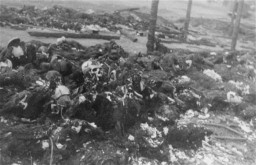
-
Slide about Lebensraum from a Hitler Youth educational presentation
Photo25th Nazi propaganda slide for a Hitler Youth educational presentation in the mid-1930s. The presentation was entitled "5000 years of German Culture." This slide references Lebensraum (the need for living space) in German history: "Wachsende Volkszahl im fargen Nordland zwang neuen Lebensraum zu suchen. Das innerlich morsche Römerreich bricht im Ansturm der Germanen zusammen." Translated as: "Growing numbers of people in Nordland were forced to look for a new habitat. The inwardly…

-
Mugshot of Colonel Joachim Peiper
PhotoMugshot of Colonel Joachim Peiper, defendant in the Malmedy atrocity trial. He was sentenced to death by hanging. Photograph taken ca. 1946.
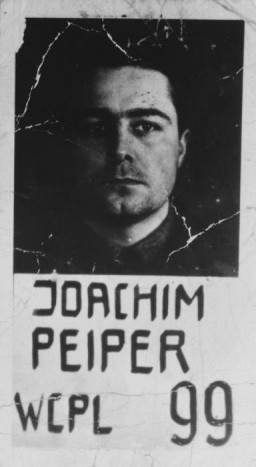
-
Malmedy Massacre
PhotoBodies of US soldiers killed by Waffen SS troops during the Malmedy Massacre on December 17, 1944. Photograph taken in January 1945.

-
Prewar family photograph in Zhetel
PhotoShlamke and Shanke Minuskin pose with their baby son, Henikel, in the garden of their home. Zhetel, Poland, 1938.
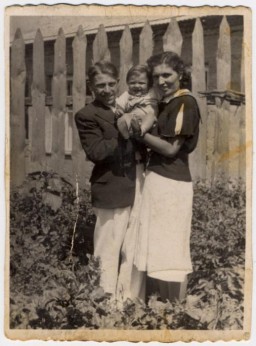
-
Refugees leave Warsaw
PhotoCivilians flee Warsaw following the German invasion of Poland. Hundreds of thousands of both Jewish refugees and non-Jewish refugees fled the advancing German army into eastern Poland, hoping that the Polish army would halt the German advance in the west. Many of the refugees fled without a specific destination in mind. They traveled on foot or by any available transport—cars, bicycles, carts, or trucks—clogging roads to the east. Most took only what they could carry.
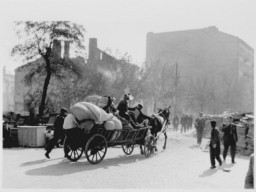
-
Zsofi Brunn (back row, center) poses with the orphans under her care
PhotoZsofi Brunn and members of her family were deported from Hungary to Auschwitz-Birkenau in June 1944. Her husband and mother were killed upon arrival. Zsofi and her daughter Anna were transferred to a labor camp in Czechosovakia. They were eventually liberated by Soviet forces in May 1945. Zsofi and Anna returned to Hungary. They moved to Rakosszentmihaly, near Budapest. There, Anna finished high school, and Zsofi directed a Jewish orphanage. This photo shows Zsofi (back row, center) posing with the…
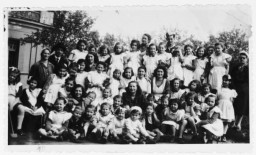
-
Henry Morgenthau, Jr., testifies in support of Lend-Lease
PhotoHenry Morgenthau, Jr., testifies before the Senate Foreign Relations Commission in support of the Lend-Lease bill to aid Britain. Morgenthau was secretary of the treasury under President Franklin D. Roosevelt. Lend-Lease was the name of the US policy of extending material aid to the Allies before and after the United States entered World War II.
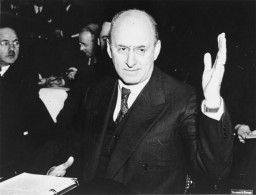
-
Frieda Belinfante
Photo“For three months I was disguised as a man, and very successfully… I passed my mother several times … she never recognized me.” Frieda Belinfante, a half-Jewish lesbian, used this disguise to hide from Nazi authorities. In a later interview she said, “I really looked pretty good.” Her involvement in the resistance movement included planning the destruction of the Amsterdam Population Registry in March 1943, falsifying identity cards, and arranging hiding places for those who were sought by…
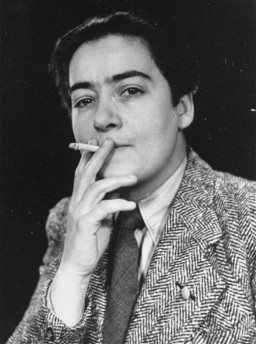
-
Arriving in New York
PhotoChildren aboard the President Harding look at the Statue of Liberty as they pull into New York harbor. They were brought to the United States by Gilbert and Eleanor Kraus. New York, United States, June 1939.
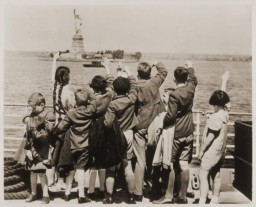
-

-
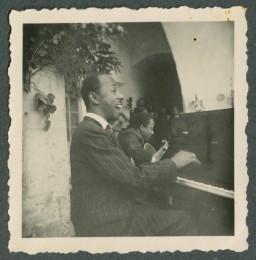
-
An African-American soldier with the 12th Armored Division
PhotoAn African-American soldier with the 12th Armored Division, Seventh U.S. Army, stands guard ov...

-
Ruins of the Warsaw ghetto
PhotoA view of the wall surrounding the ruins of the Warsaw ghetto in German-occupied Poland a few months after the ghetto's destruction. Photograph taken ca. June-October 1943.

-
Gartenberg family portrait
PhotoFamily portrait of the Gartenberg family in Drohobycz, Poland. None of those pictured would survive the Holocaust. Photograph taken in 1930. Top row: Julius Gartenberg, Anna Fern, Bernard Klinger, Ona Fern and Izador Gartenberg. Lower row: Marcus Gartenberg, Hinda Gartenberg with her grandaughter Tony Schwartz on her lap, Sol Schwartz, and Ida Fern.

-
Wedding in the Bad Reichenhall displaced persons' camp
PhotoPhotograph taken during the wedding of Ibby Neuman and Max Mandel at the Bad Reichenhall displaced persons' camp. Germany, February 22, 1948.
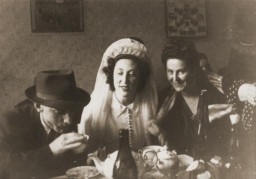
-
Portrait of Margot (Miriam) and Gerhard (Gad) Beck
PhotoGerhard and Margot's mother came from a Protestant family. She met her future husband when she went to work in the telephone exchange at his company. She converted to Judaism in 1920. The couple married in 1920, and in 1923 had their twins Gerhard and Margot. Both Gerhard and Margot would become active in Jewish youth movements, and took on Hebrew names (Gad and Miriam). On February 17, 1943, Gad was ordered to report to the temporary internment camp established at a former Jewish community building on…

-
Théophile Larue
PhotoFrench policeman Théophile Larue, who warned his Jewish neighbors of an upcoming roundup.
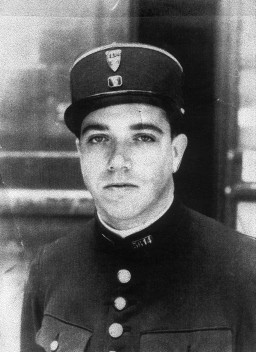
-
Adolf Hitler stands with an SA unit during a Nazi parade
PhotoAdolf Hitler stands with an SA unit during a Nazi parade in Weimar, where the constitution of the Weimar Republic was drafted in 1919. Weimar, Germany, 1931.

